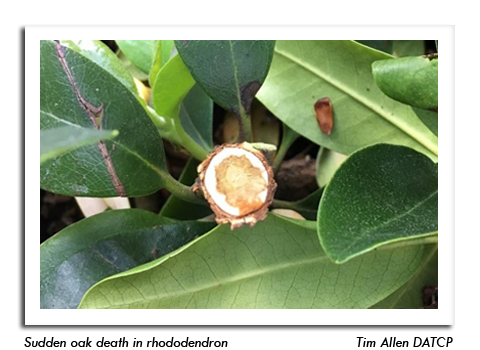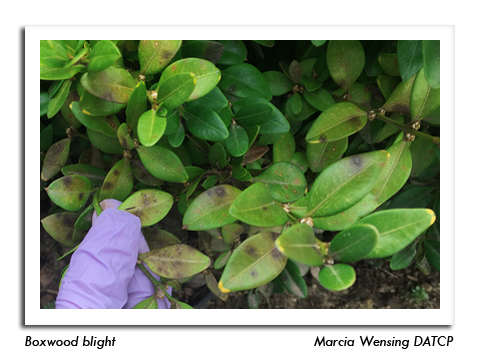Looking Ahead
Volume 64 Number 19 Date 11/07/2019
PEST HIGHLIGHTS OF 2019
SWEDE MIDGE - A new state record was established in June with the first Wisconsin detection of swede midge, Contarinia nasturtii (Diptera: Cecidomyiidae), a small fly that infests brassica plants and causes distorted growth and damage to developing flower heads. The flies were captured on sticky traps in Dane County on June 17 and in Milwaukee County on July 1, as part of a DATCP vegetable pest survey in urban community gardens. Swede midge is extremely difficult to control once established and has the potential to significantly impact brassica production in Wisconsin. DATCP is planning an expanded survey effort for this new pest in 2020.
CORN ROOTWORM - After two consecutive years of record-low averages, beetle counts increased in southern Wisconsin in 2019. The annual survey in August found higher rootworm pressure in the southwest and south-central areas compared to 2018, while populations remained the same or decreased in the seven other crop districts. The state average number of beetles per plant also increased this year--from 0.2 in 2018 to 0.3 in 2019--reflecting the higher beetle counts observed in the southern districts in late summer.
RAMORUM BLIGHT - On August 23, DATCP announced the interception of a rhododendron plant infected with Phytophthora ramorum, or Ramorum blight, in Marathon County. The plant was supplied by a Washington state nursery that had shipped 4,000 potentially infected azalea, kalmia and rhododendron plants to Wisconsin and at least 27 other states. A trace-back survey of 59 garden centers and nurseries found only the one infected rhododendron plant, although the USDA reported in October that "Double Red Knockout" roses sold at Walmart stores were also potentially infected with Ramorum blight. The roses came from an Oklahoma nursery. Ramorum blight can be transmitted to as many as 100 different plant species, including hardwoods, softwoods and shrubs. Oak trees are at greatest risk of the disease, which is also referred to as sudden oak death.
LILY LEAF BEETLE - The invasive red lily leaf beetle (LLB) was reported in six new counties this season: Dane, Door, Oneida, Pierce, Price and Taylor. First detected in Marathon County in 2014, LLB has now been confirmed in 12 Wisconsin counties. The adult beetles are bright red and conspicuous, while the larvae can be found by inspecting Asiatic lily leaves for defoliation. The leaf damage caused by LLB larvae can be significant and, without intervention, will eventually kill the plant.
BROWN MARMORATED STINK BUG - Dodge and Lafayette counties were the only additions to the Wisconsin brown marmorated stink bug (BMSB) distribution map this year. Populations are currently highest in the Madison, Milwaukee and Fond du Lac to Green Bay areas, although this pest's range is also expanding into western Wisconsin. As of November 1, BMSB reports have been verified from 30 of the state's 72 counties.
EUROPEAN CORN BORER - Larval populations once again reached the lowest level in recorded history. DATCP's fall European corn borer (ECB) survey documented a state average of 0.01 borer per plant, the same average as in 2018 and tying the lowest count since 1942. The main contributing factor to the all-time low ECB pressure is Wisconsin's continued high use rate of Bt corn, which accounted for 75% of planted corn acres in the state last year.
BOXWOOD BLIGHT - This devastating fungal disease of boxwood was diagnosed on boxwood from a Dane County residence on October 25, according to Dr. Brian Hudelson of the UW Plant Disease Diagnostics Clinic (PPDC). Boxwood blight had previously been found by DATCP inspectors on plants at two big box retailers in Dane and Portage counties and in two Kenosha County nurseries, but the recent case marks the first report of the disease in the landscape. The PPDC currently offers boxwood blight testing for free: https://pddc.wisc.edu/sample-collection-and-submission/.
-- Krista Hamilton, DATCP Entomologist


.jpg)







.jpg)


